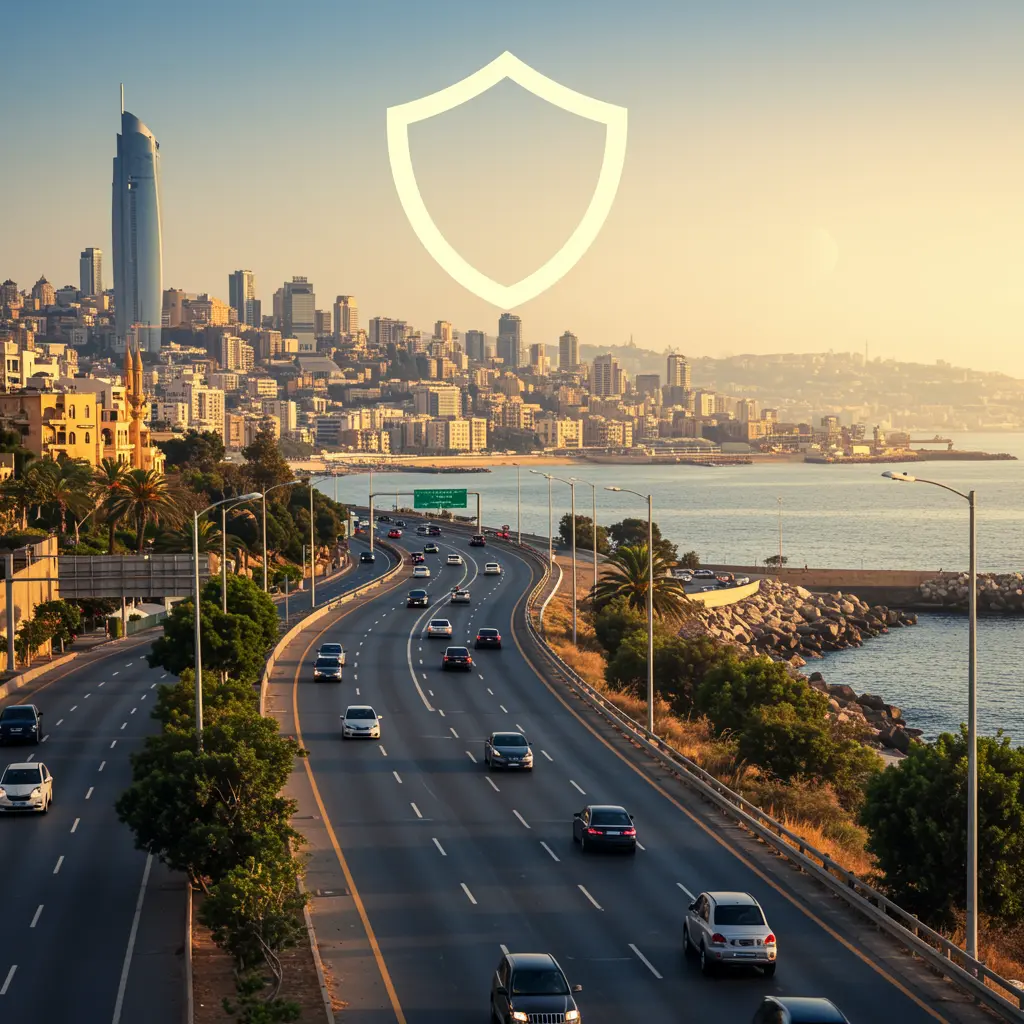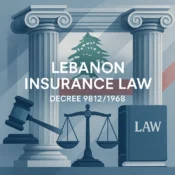Choosing the right car insurance in Lebanon requires balancing legal obligations, financial protection, and the realities of a fluctuating economy. This guide explains the main types of motor insurance available, the key factors that drive premiums, and practical tactics to compare quotes so you can pick coverage that fits your risk profile and budget. You will learn what mandatory Third-Party Liability (TPL) covers under local rules, how comprehensive policies differ, which add-ons deliver real value, and how to navigate claims when an accident happens. The article also walks through step-by-step comparison and claims procedures, and explores how Lebanon’s economic conditions affect replacement costs and policy selection. Throughout, the guide uses targeted advice, tables, and checklists so you can quickly assess options and prepare the documents and questions needed to secure the appropriate motor insurance coverage.
What Are the Types of Car Insurance Available in Lebanon?
Motor insurance in Lebanon is broadly divided into mandatory third-party liability and a set of optional covers that protect your vehicle and occupants. Third-Party Liability (TPL) is required by law and compensates others for bodily injury and property damage you cause, while comprehensive and collision covers extend protection to your own vehicle for damage, theft, fire, and total loss scenarios. Understanding the distinction between coverage types helps you decide when to accept minimum legal protection and when to buy broader financial security. Below is a concise table comparing common coverage types to clarify typical inclusions and exclusions, followed by concrete examples that illustrate when each type is most appropriate.

Coverage Type | What it covers | Typical examples / exclusions |
|---|---|---|
Third-Party Liability (TPL) | Bodily injury and property damage to third parties | Covers medical bills and repairs for others; excludes damage to your own vehicle and theft |
Comprehensive (All Risk) | Own-vehicle damage, third-party liability, theft, fire, vandalism | Suited for newer or financed cars; may exclude wear-and-tear and mechanical failure |
Collision | Repair costs from collisions with another vehicle or object | Often part of comprehensive or offered as add-on; excludes non-collision incidents like theft unless specified |
Total Loss / Agreed Value | Payout when repair cost exceeds vehicle value or total loss declared | Agreed-value policies pay pre-set amount; exclusions vary by insurer and valuation method |
This comparison clarifies how each coverage type allocates financial responsibility between you and third parties, and it prepares you to evaluate quotes based on actual inclusions rather than price alone.
What Does Mandatory Third-Party Liability Insurance Cover in Lebanon?
Third-Party Liability (TPL) insurance in Lebanon legally covers third-party bodily injury and property damage caused by the insured vehicle, making it the minimum required motor insurance for road use. It functions to protect other road users from financial loss when an insured driver is at fault by covering medical costs, rehabilitation, and repair or replacement of damaged property belonging to third parties. TPL does not cover the policyholder’s own vehicle, theft, fire damage to the insured car, or personal medical costs for the driver and passengers, so it leaves gaps that drivers must assess against their risk tolerance. A typical example is a low-speed collision in which TPL pays the other driver’s repair bill and medical expenses but leaves the insured to cover their own vehicle’s damage; understanding this helps drivers decide if additional coverage is necessary.
This legal baseline leads naturally to examining comprehensive cover and the additional protections it provides.
Insurance Sector Challenges in MENA: Focus on Motor Insurance Compliance
The level of compliance with compulsory motor insurance is low, and the insurance sector has been slow to develop. The insurance sector in the Middle East and North Africa (MENA) region faces a number of challenges, including low levels of insurance penetration, a lack of public awareness about the benefits of insurance, and a shortage of skilled personnel. In addition, the sector is affected by the political and economic instability in the region.
The insurance sector in the Middle East and North Africa: Challenges and development agenda, 2011
How Does Comprehensive Car Insurance Differ from Third-Party Liability?
Comprehensive car insurance expands protection beyond TPL by covering damage to your own vehicle from collisions, theft, fire, vandalism and sometimes natural hazards, in addition to third-party liabilities. The mechanism is simple: comprehensive policies shift repair and replacement risk for the insured vehicle from the owner to the insurer, at the cost of higher premiums and possible deductibles. For new, financed, or high-value cars, comprehensive cover often makes financial sense because repair or replacement costs can be disproportionately large relative to premiums. For older vehicles with low market value, the premium-versus-payout trade-off may favour TPL only, especially if replacement parts are expensive or scarce.
Understanding this trade-off points to the next section: the specific factors that drive premium differences across insurers and policies.
What Factors Affect Car Insurance Premiums in Lebanon?
Several measurable factors influence car insurance premiums in Lebanon, and insurers combine them to estimate expected loss and price policies accordingly. Key drivers include vehicle attributes (make, age, engine size, market value), driver profile (age, license tenure, claims history), geographic risk (urban parking, theft rates), and policy design (deductible level, coverage limits, add-ons). Each factor modifies either the probability of a claim or the expected claim cost, which translates directly into premium adjustments; for example, high-theft models and expensive imported parts raise replacement costs and therefore premiums. Below is a table that connects common factors to their effects and practical mitigation tips to lower premiums without eroding necessary protection.
Factor | How it changes premium | Practical example / mitigation tip |
|---|---|---|
Vehicle make & value | Higher value increases premium due to replacement costs | Choose agreed valuation or install verified security devices to reduce premium |
Vehicle age & parts availability | Older cars may be cheaper to insure but parts scarcity can raise repair costs | Consider partial comprehensive or higher deductible to balance cost |
Driver age & experience | Younger or novice drivers face higher rates due to statistical risk | Enroll in defensive driving course and maintain a clean record to earn discounts |
Claims history | Frequent claims increase future premiums | Consolidate small repairs out-of-pocket to preserve no-claims discounts |
Location & parking | Street parking in high-risk areas increases theft/accident risk | Secure parking or alarm systems can lower premiums with proof provided |
Recognizing how these attributes feed into pricing lets you target the most impactful levers vehicle security, deductible adjustments, and driver behavior to manage premium cost without sacrificing core protections.

How Do Vehicle Details Influence Your Insurance Premium?
Vehicle-specific characteristics alter both the likelihood and expected cost of claims: expensive makes, large engines, and models with high repair-part scarcity drive premiums up because insurers anticipate costlier repairs. Market value matters because many payouts are tied to either market or agreed value; cars with imported parts or limited local availability are more expensive to fix, increasing insurer exposure. Mitigation strategies include documented security measures (tracking, immobilizers), choosing models with abundant spare parts, and selecting valuation methods that reflect realistic replacement costs. These choices directly affect the premium calculation and are especially relevant in Lebanon where parts inflation can be a major cost driver.
This focus on vehicle-level risk leads to considering how the driver’s profile shifts pricing and insurability.
How Does Driver Profile Affect Premium Costs?
A driver’s age, experience, claims history, and traffic record are primary behavioural predictors that insurers use to set premiums; younger drivers and those with recent violations typically face higher rates because of higher statistical loss frequency. Insurance companies also consider license tenure and prior claims to estimate future behaviour, so maintaining a clean driving record and demonstrating defensive driving can lower premiums over time. Employers and occupations are sometimes factored where job-related mileage or exposure is relevant, and no-claims discounts reward prolonged claim-free periods. Implementing risk-reduction measures such as training courses, limited mileage endorsements, or telematics where available can translate directly into reduced premium charges.
With underwriting factors understood, the next step is learning how to compare quotes fairly and efficiently.
How Can You Compare Car Insurance Quotes and Policies Effectively in Lebanon?
Comparing car insurance quotes effectively means normalizing coverage differences so price comparisons are apples-to-apples, assessing insurer reliability, and checking exclusions that materially change outcomes. Start by listing required coverages (TPL minimum, desired own-vehicle protections), then request itemized quotes showing limits, deductibles, and add-ons. Look beyond headline premiums: verify claim handling timelines, repair network terms, and whether market or agreed value applies to total loss settlements. These steps create a robust comparison workflow you can repeat across multiple providers to find the best balance of cost, coverage, and service.
- Gather standardized details: provide vehicle make/model, year, registration value, driver information, and desired limits for every quote.
- Normalize coverage: ensure each quote is for the same combination of TPL, comprehensive, deductibles, and add-ons.
- Check insurer terms: review exclusions, repair network rules, depreciation tables, and claim timelines.
- Assess service: evaluate responsiveness, documented customer support processes, and available assistance like roadside help.
These checklist items make it practical to compare options and select the policy that best matches your needs and financial tolerance.
What Should You Look for When Comparing Car Insurance Plans?
When reviewing any policy or quote, focus on specific contract features that materially affect outcomes: coverage limits, deductible amounts, exclusions, valuation method for total loss, and how add-ons are defined and priced. Also inspect claims handling language how quickly will the insurer assess damages, which repair shops are approved, and what proof is required for theft or accident claims. Consider the long-term cost picture including premium escalators after claims and whether discounts (no-claims, multi-policy) apply. Verifying these items ensures that the lowest premium does not conceal gaps that could leave you exposed in a loss.
This careful comparison process naturally connects to how you can use a quoted workflow from a trusted provider during evaluation.
How to Use The Guardian Insurance’s Quote Process to Find the Best Plan?
The Guardian Insurance uses a clear three-step process Select A Plan, Schedule A Meet, and Meet Us to guide prospective policyholders from initial research to a personalized plan selection, which fits naturally into a structured comparison workflow. Provide consistent vehicle and driver details to The Guardian Insurance when requesting a quote so the offer can be directly compared with other providers; this includes vehicle make, model, year, registration value, driver history, and desired deductibles. The Guardian Insurance’s role, framed by the guiding objective to provide useful information about insurance and financial products, build trust, and lead individuals and businesses to discover, compare, and purchase Guardian’s offerings, is to clarify coverage choices, explain exclusions, and help normalize quotes for apples-to-apples comparison. After receiving comparable quotes, schedule the meet step to discuss tailored options, ask about repair networks and claim timelines, and finalize the plan that best balances cost and protection.
How Do You Navigate the Car Insurance Claims Process with The Guardian Insurance?
Filing a claim begins with immediate safety and documentation, then prompt notification to your insurer to start assessment and repair coordination. Insurers generally require incident details, photos, witness information, a police report if applicable, and ownership and policy documents to process claims efficiently. Knowing the standard sequence secure scene, document, notify police if necessary, inform insurer, submit documents reduces delays and positions claims for quicker resolution. Below is a practical, numbered checklist to follow after an accident to ensure you meet typical insurer requirements and timelines.
- Ensure safety and medical attention: prioritize injuries and call emergency services if required.
- Document the scene: take photos of all vehicles, license plates, skid marks, and surrounding context.
- Collect information: exchange names, contact details, vehicle registrations, and witness statements.
- Notify authorities: obtain a police report when mandated or when injuries/significant damage occur.
- Notify insurer promptly: report the claim to your insurer within required timelines and submit requested documents.
Following these steps speeds up assessment and repair authorization and reduces the chance of claim disputes.
What Are the Steps to File a Car Insurance Claim in Lebanon?
After immediate scene actions, file your claim by contacting your insurer’s claims intake and submitting requisite documents: police report (if applicable), photos, ownership documents, driver’s license, and the insurance certificate. Insurers will assign a claim number and typically schedule an assessor to inspect the vehicle, estimate repair costs, and confirm liability; repair approvals follow once liability and costs are agreed. Timelines can vary initial intake is usually within 24-72 hours, assessment within a few days, and repair scheduling after approval so early and clear communication is essential. Keeping copies of all correspondence and receipts provides a paper trail that supports smoother settlement and appeals if disagreements arise.
These procedural steps lead directly to how The Guardian Insurance supports policyholders during each stage of claims.
MENA Insurance Sector: Challenges, Low Penetration, and Car Insurance Revenue
The insurance sector in the Middle East and North Africa (MENA) region faces a number of challenges, including low levels of insurance penetration, a lack of public awareness about the benefits of insurance, and a shortage of skilled personnel. In addition, the sector is affected by the political and economic instability in the region. Lebanon are close to the predicted levels, but the insurance generate limited premium revenues from car insurance, As shown in the preceding sections, the factors affecting insurance
The insurance sector in the Middle East and North Africa: Challenges and development agenda, 2011
How Does The Guardian Insurance Support Policyholders During Claims?
The Guardian Insurance supports policyholders through structured claim intake, assessment coordination, and repair facilitation designed to reduce stress and speed resolution; policyholders can expect guidance on required documents, clarity on timelines, and assistance coordinating repairs with approved garages. As a lead generation and information hub with motor insurance offerings, The Guardian Insurance emphasizes personalized insurance plans and a straightforward customer workflow that helps clarify expectations at each claim touchpoint. Typical support includes claim intake acknowledgement, assessor assignment, updates on settlement progress, and practical advice on temporary mobility options where offered under policy terms. This approach links back to the company’s broader objective to provide useful information about insurance and financial products, build trust, and lead individuals and businesses to discover, compare, and purchase Guardian’s offerings, ensuring claimants know who will handle each step.
Explaining claims assistance naturally raises the question of optional protections that can reduce out-of-pocket exposure and improve convenience.
What Optional Add-ons and Enhanced Coverage Are Available for Lebanese Drivers?
Optional add-ons extend protection beyond base policies, offering targeted benefits like roadside assistance, glass cover, replacement vehicle, legal assistance, and personal accident cover. These add-ons operate by filling common gaps roadside assistance handles breakdowns away from home, glass cover pays for windscreen repair without affecting your no-claims discount in some policies, and a replacement vehicle covers mobility during repair. Choosing add-ons should depend on driving patterns, commute distances, and tolerance for unexpected expenses; for example, frequent long-distance drivers often find roadside assistance and replacement-vehicle cover high value. The table below outlines common add-ons, their benefits, and when each is recommended to help you prioritize what to buy.
Add-on | Benefit | When recommended / premium effect |
|---|---|---|
Roadside Assistance | Towing, on-site repairs, fuel delivery | Recommended for long commutes or remote travel; modest premium increase |
Glass Cover | Windscreen and window repairs/replacement | Valuable in urban areas with higher glass damage incidents; small premium uptick |
Replacement Vehicle | Temporary vehicle while yours is repaired | Useful for daily commuters; moderate premium cost |
Personal Accident | Medical and accidental death benefits for driver/passengers | Important if health coverage gaps exist; increases premium depending on limits |
This tabulated view clarifies how add-ons affect both out-of-pocket risk and recurring premium cost, which helps align selections with personal risk and budget.
Which Add-ons Provide Extra Protection Beyond Basic Coverage?
Several add-ons directly reduce financial friction in common loss scenarios: roadside assistance prevents being stranded after a breakdown, glass cover avoids large windscreen bills, legal assistance helps with litigation or liability disputes, and a replacement vehicle maintains mobility during repairs. Each add-on’s mechanism is targeted: roadside assistance bundles services for immediate problems, while replacement vehicle cover offsets rental costs that would otherwise be out-of-pocket. Assess add-ons by asking whether the expected frequency of the event multiplied by typical costs exceeds the quoted annual premium for the add-on. Prioritize add-ons that replace high, unpredictable expenses or that preserve your ability to work and earn income after an incident.
These value judgments bring us to how add-ons typically affect your total premium and ways to assess cost-effectiveness.
How Do Add-ons Affect Your Premium and Coverage Value?
Add-ons increase the base premium in proportion to their expected claim frequency and average payout; simple, low-cost services like basic roadside assistance carry modest premiums, while replacement vehicle and personal accident benefits increase premiums more substantially because of higher potential payouts. To evaluate cost-effectiveness, estimate annualized expected costs of an event (probability × average payout) and compare to the add-on premium if the add-on premium is lower than your expected annual loss, it often makes financial sense. Decision rules include: purchase replacement-vehicle cover if losing mobility would cause significant income loss, choose glass cover when local breakage rates are high, and skip add-ons with low personal utility to control costs. Remember that tailored plans can bundle add-ons at a better price than buying separately, so ask insurers about bundled options.
This analysis of add-ons leads into the broader economic context that shapes affordability and risk trade-offs for Lebanese drivers.
How Does Lebanon’s Economic Situation Impact Car Insurance Choices?

Lebanon’s current economic environment affects replacement part costs, repair timelines, and premium affordability, making policy selection a balance between legal compliance and practical financial protection. Inflation in parts and labour increases the expected cost per claim, which insurers reflect in higher premiums or tighter exclusions; at the same time, household budgets may be constrained, prompting some drivers to opt for lower coverage or higher deductibles. Maintaining at least mandatory TPL remains crucial to avoid legal penalties and catastrophic liability exposure, while targeted choices higher deductibles, selective add-ons, and agreed-value options help preserve essential protections without untenable premium burdens. Evaluating these trade-offs requires up-to-date price comparisons and prioritizing protections that guard against financially catastrophic events.
These macro considerations make clear why insurance remains essential even when budgets are tight and lead into practical tactics drivers can use now.
Why Is Car Insurance Still Crucial Despite Economic Challenges?
Car insurance remains vital because a single at-fault accident can create liabilities and repair bills far larger than annual premiums, and legal requirements for TPL mean non-compliance carries penalties and exposure to third-party claims. Even in strained economic conditions, the financial risk of an uninsured total loss or injury claim can bankrupt individuals or force asset liquidation. Insurance transfers that concentrated financial risk to an insurer in exchange for predictable premiums, which is especially valuable when liquidity is limited. Prioritizing minimum legal coverage plus targeted protection against catastrophic loss preserves financial stability and meets legal obligations, thereby avoiding the compounding costs of unprotected incidents.
Understanding why protection matters leads to specific, actionable tactics drivers can use to manage costs in Lebanon’s economy.
How Can Drivers Make Informed Insurance Decisions in Lebanon’s Economy?
Drivers can manage cost and coverage trade-offs by applying these tactics: raise deductibles to lower premiums while keeping enough protection for major losses; choose add-ons selectively based on commute and usage patterns; compare market and agreed-value options for total loss scenarios; and seek payment plans or bundled discounts that reduce short-term cash strain. Additionally, maintaining a clean driving record, documenting vehicle security measures, and shopping multiple quotes annually helps keep premiums competitive. For tailored guidance, consult a trusted advisor who can model scenarios and recommend a balanced policy mix that preserves critical protections while fitting current budgets. The Guardian Insurance offers personalized insurance plans and a clear selection workflow Select A Plan, Schedule A Meet, and Meet Us to help drivers apply these tactics and find cost-effective coverage while aligning with the broader goal to provide useful information about insurance and financial products, build trust, and lead individuals and businesses to discover, compare, and purchase Guardian’s offerings.
This final decision-oriented guidance closes the loop between risk assessment, policy selection, and the practical support available to drivers in Lebanon.




